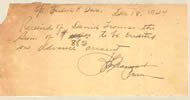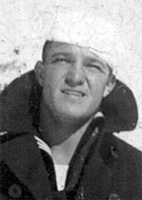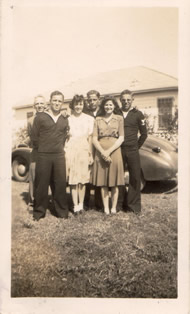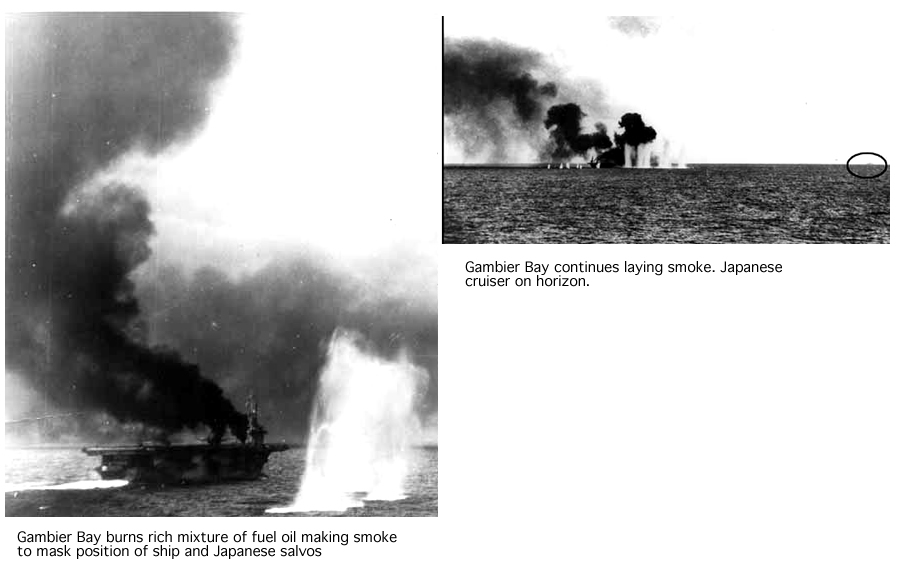Voyage Six
SS Frederic E. Ives - Page 3
I was drinking in another small bar where the owner spoke some English. He asked me if I wanted a woman and pointed to this little girl over in the corner. She was just a child. I doubt that she was more than thirteen or fourteen years old. I told him that I wasn't interested. This Frenchman must have thought that I was afraid that she was diseased, so he starts reassuring me that she is clean. He says he's sure because the girl is his daughter. Jesus Christ, that sickened me! How can a man do that with his own child! I told him off - how disgusting he was and walked out. There was a lot of bomb damage around La Have and the people didn't have much. But I couldn't imagine things getting so bad that a man would pimp his own daughter.
On December 19th the Ives went up the Seine River to Rouen, France. ( On December 16, 1944 the German offensive known as the Battle of the Bulge began in Belgium about two hundred miles to the Northeast. ) Rouen wasn't in as bad shape as Le Harve; I don't remember that much battle damage there, at least not away from the docks in the town. It was a much smaller place than La Havre. They have a famous cathedral there and it was damaged. I remember the statue in the town square of Joan of Arc. She was from there, I was told. That winter of 1944-45 was one of the coldest winters in years; not the best weather to be a tourist. But I don't remember any snow in England or France, just that it was gray and terribly cold. I always wore an all wool turtle neck sweater under my wool peacoat but I was never warm. I brought back a booklet of black and white post cards of Rouen image 1, image 2, image 3. The pictures were taken before the war and the place looks a lot prettier in the post cards than how I remember it.
On Christmas Day 1944 we left Rouen and sailed down the River Seine past La Havre and out into the English Channel alone and unescorted. Looking through the stuff I kept from that time, I found a mimeographed Christmas dinner menu, so I know what I must have eaten Christmas Day 1944 sailing down the Seine. (On Christmas Eve, the Belgian liner Leopoldville, carrying 2,235 U. S. Army soldiers was torpedoed off Cherbourg by the U-486. More than 800 U.S. soldiers died. ) The next day the Ives arrived at the Isle of Wight where it joined up to make a ten ship convoy with two escorts and sailed south down the Channel along the English coast. The Ives rounded Lands End and sailed up into the Mumbles Anchorage off the coast of Wales on December 27th. The next day alone the Ives steamed into Cardiff, Wales. The Ives took on ballast in Cardiff and was docked there four days.
This was my first trip working below decks and when the escorts dropped depth charges you really felt them in the engine room. Sound is magnified in water so they gave us quite a jolt. Down below you also had no idea what was going on or what caused the explosions. If they were dropped close to the ship it felt like the ship had exploded and the plates were going to rip apart. It was more dangerous working in the "black gang" than topside. U-boat commanders aimed for the engine room because a hit there would stop a ship dead in the water, so even if it didn't sink her right away, they would have a stationary target for another torpedo. More seamen from the engine crews probably were killed or injured than any of the other ratings that made up the thousands of Merchant Marine casualties. Of course if the ship starts flooding it is safer above decks than below the water line.
( In late Summer and Fall of 1944 after the Normandy Invasion, German sub and E-boats attacks and mine laying operations intensified in the English Channel. Starting in the Winter of 1944 the Germans began attacking convoys again and concentrating submarines in the waters around England. In the weeks that the SS Frederic E. Ives was in the waters between England and France or docked in France, a number of Allied merchant ships were sunk, as well as two English destroyers, and dozens of ships were damaged. Two days before the Ives returned to the Isle of Wight, a German submarine sank an American merchant ship there; and three days after the Ives sailed for Lands End another sub sank two merchant ships using the same convoy route. )
On January 2, 1945 the Ives join a sixty five ship convoy in the Barry Roads and with several escorts sailed for the United States. The SS Frederic E. Ives arrived at New York on January 18, 1945. The crew was discharged and paid off at the Overlakes Freight Corporation office in New York City.
I am pretty sure it was when I got home in January of 1945 that I found out my cousin, Tony Faust, was missing in action and presumed dead. His ship, the aircraft carrier, U.S. S. Gambier Bay, had been sunk in the Philippines at the end of October '44. I'm pretty sure I didn't hear about him being lost in any letters while I was at sea, so it would have been when I got home about two and a half months afterwards. When his twin brother, Bobby, heard that survivors off his ship were in the hospital in California, he went AWOL from the Army. Bobby went out there to talk to the survivors. They all said that Tony, who was a radioman, was on duty when an eight inch cruiser shell or sixteen inch shell from a Jap battleship hit the radio room. Everybody in there had to be killed. When Bobby got back to the Army they didn't do anything to him. I think it wasn't too long after that they discharged Bobby.
Tony's death hit the whole family hard. Aunt Rose was sick for months. I don't think she ever really got over loosing Tony. Tony was just the best. He was fun to be around. He was always laughing - just the nicest guy. He was a couple of years older and I always looked up to him. Growing up we spent lots of time with the Fausts. My father was close to his aunt and a good friend and drinking buddy of her husband, Bob. We'd go over to their house at least once a week. Bobby, Tony's twin, was all together different. Bobby had a mean temper and was quick to fight. Bobby would hurt you. Harry was a nice kid and very quiet. Don, the youngest, was most like Tony. Don was always pleasant and easy to be around. I later named my first daughter "Toni" after my cousin and our uncle Tony Traverso.
For the complete story of the battle of the Leyte Gulf, go to the USS Gambier Bay Assoc. Website: http://www.ussgambierbay-vc10.com/




